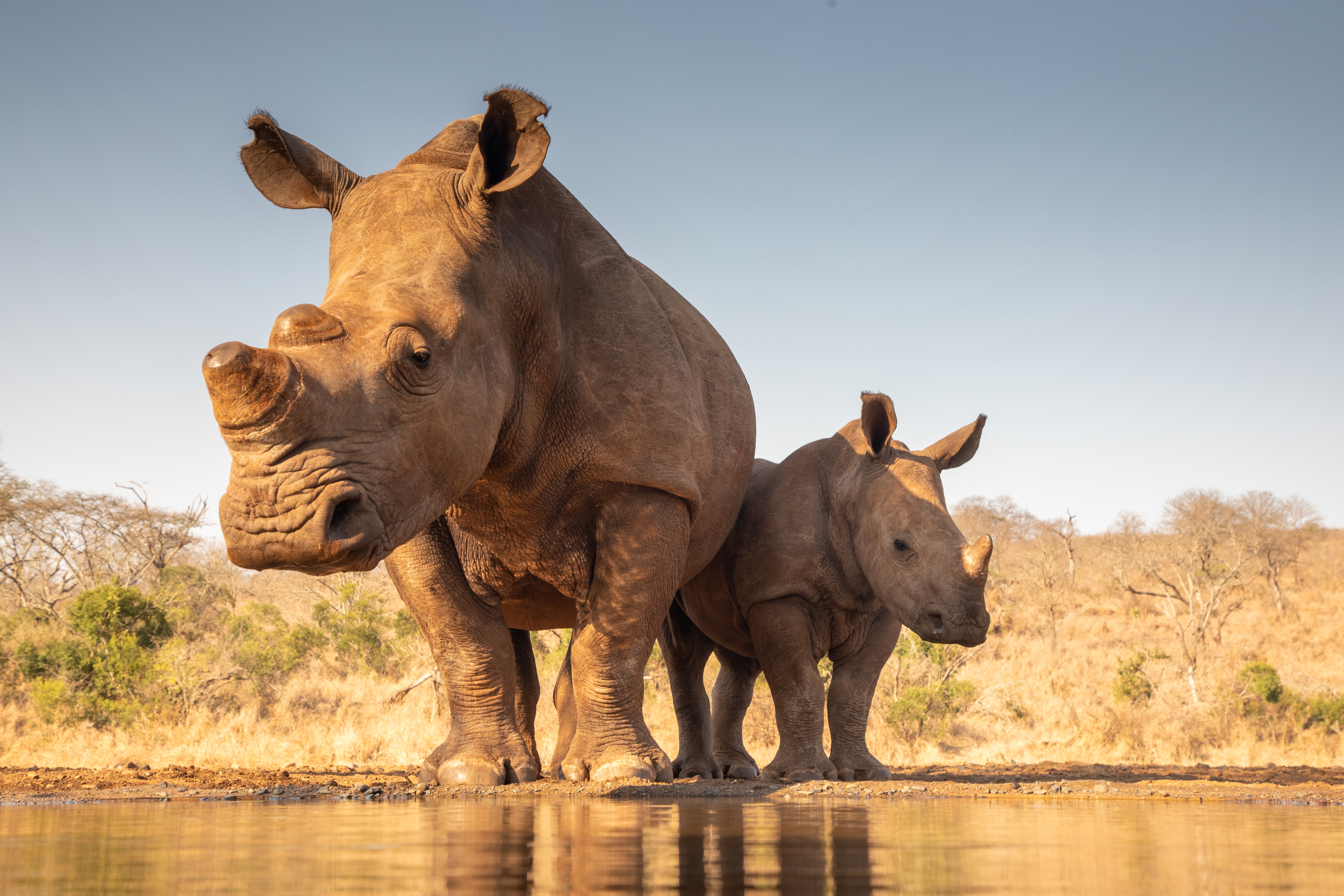It’s easy to assume that “big” equals “strong”. If you pitted an elephant and a guinea pig against each other in a weightlifting contest, it’s pretty easy to guess how that would go… or is it? While some of the strongest bones to be found in the animal kingdom do belong to the traditional big hitters, some smaller critters pack an outsized punch when it comes to the relative strength of their skeletons.
Are bigger bones always stronger?
Bigger animals have bigger bones, and you need a certain amount of strength to support all that heft – but the relationship between size and strength is not as simple as that.
The biggest skeleton in a living animal today will be found inside a blue whale, but their bones are not the densest or strongest. Lower-density bone tissue means greater buoyancy, so it’s easier for blue whales to ascend back to the surface to breathe once they’ve completed a deep dive.
On land, the circumstances are different. Without the supporting effect of all that water, the titans of the Earth have had to evolve various structural changes inside their bones to enable them to grow to ever-larger sizes. One of the largest land animals we know of to date is the extinct Patagotitan mayorum, a truly colossal dinosaur whose bones would have needed exceptional strength to support its body.
However, nature always likes to throw a curveball into the mix. Some of the most impressive bones we know of belong to animals that are definitely on the smaller side.
Which animal has the strongest bone?
The longest, heaviest, and strongest bone in the human body is the femur or thigh bone – there’s even a Guinness World Record to prove it. Though we humans are relatively puny among mammals, our femurs are stronger than steel, weight for weight. A similar pattern is repeated throughout the animal kingdom – where there are legs, you’ll probably find strong femurs. But which takes the top spot?
One likely candidate is the rhino. As evolutionary biologist Professor Ben Garrod explained in the 2014 BBC series Secrets of Bones, “the rhino femur is capable of withstanding 109 tonnes” of compressive force. Well, just look at the size of them.
Legs like tree trunks.
Image credit: Peter van Dam/Shutterstock.com
But Garrod reached that conclusion by extrapolating from data from a much more surprising source. The delicate roe deer stand at an average height of just 75 centimeters (29.5 inches) and weigh only 25 kilograms (55 pounds), yet testing performed at the University of Bath revealed their slender femurs can cope with a staggering 1.7 tonnes of compressive force before they snap.
Inside this adorable package are some seriously sturdy leg bones.
Image credit: WildMedia/Shutterstock.com
Which animal has the strongest spine?
Strong legs are certainly useful, but what about the bones that support the entire length of the body?
Once again, humans do okay here. Our spinal columns have the crucial job of supporting our heads, and protecting the spinal cord and vital blood vessels going to and from the brain, so it’s handy to know that they’re pretty hard to break. When asked by PBS, neurosurgeon Marc Otten estimated that it takes “a force greater than 3,000 newtons” to fracture the cervical spine (the neck).
But the strength of the human spine pales in comparison to that of a tiny, unassuming little animal that you may not even have heard of.
The aptly named Thor’s hero shrew (Scutisorex thori) has a spine that’s thought to be unique among mammals, and it’s this evolutionary marvel that gives it such impressive resilience. Along with their sister species the hero or armored shrew (Scutisorex somereni), Thor’s hero shrews are the only known mammals to have interlocking spinal vertebrae. When compared side-by-side with the spine of the similar white-toothed shrew, the difference is clear.
A white-toothed shrew spine (top) vs. the interlocking uniqueness of the hero shrew spine.
“Hero shrews have crazy-looking spines – their vertebrae are squished flat like a pancake, and they have a bunch of extra places where they touch the vertebrae next to them,” said Stephanie Smith, the lead author of a 2020 study examining this quirky spinal architecture, in a statement.
The lore of these super-strong mammals includes a legend that Smith told Science News “may or may not be apocryphal” – and while we wouldn’t want to see it repeated, it does demonstrate just how sturdy these shrews are.
The story goes that when the hero shrew was first being described by European naturalists in the early 1900s, in what is now the Democratic Republic of the Congo, the Indigenous Mangbetu people showed off its hardy nature by having a man stand on one for five minutes. The shrew in the tale apparently survived the incident unscathed.
Even if this were true, however, these shrews clearly didn’t evolve such curious anatomy to become glorified stepping stones, so why are their spines like this? Scientists aren’t certain, but one hypothesis is that their dense, strong backbones allow them to scrunch and extend their bodies to tear apart wood in search of food.
Holding out for a hero (shrew).
Image credit: © Julian Kerbis Peterhans, Field Museum
In any case, “They’re dope as hell,” Smith concluded. We’re inclined to agree.
Source Link: What Are The Strongest Bones In The Animal Kingdom?
